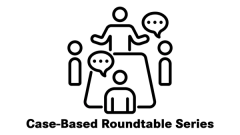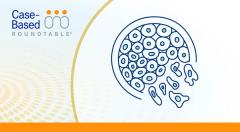
Efficacy Seen When Daratumumab is Added to Treatment in Multiple Myeloma
In an interview with Targeted OncologyTM Nina Shah, MD, discusses the findings from several trials that show the efficacy of daratumumab for patients with multiple myeloma.
Episodes in this series

Nina Shah, MD, hematologist oncologist and associate professor at the UCSF Health Center, discusses how the addition of daratumumab (Darzalex) to treatment regimens for patients, whether they are transplant eligible or ineligible, impacts their survival outcomes.
Findings from several trials have shown the addition of the monoclonal antibody to the triplet regimen of lenalidomide (Revlimid), bortezomib (Velcade), and dexamethasone (RVd) improves progression-free survival (PFS), overall survival (OS), and increases minimal residual disease (MRD) negativity rates that impact durable responses.
For example, the phase 2 GRIFFIN trial (NCT02874742) showed that stringent complete response (sCR) favored the triplet with daratumumab vs RVd alone at 42.4% vs 32%, respectively, by the end of post-autologous stem cell transplantation consolidation (odds ratio, 1.57; 95% CI, 0.87-2.82; P = .068). Moreover, at median follow-up of 22.1 months, sCRs deepened to 62.6% vs 45.4%, in the D-RVd group compared with the RVd group (P = .0177). The MRD negativity threshold rates in the intent-to-treat population also increased to 51% in the D-RVd arm compared with 20.4% in the RVd arm (P < .0001).
In transplant-ineligible patients, the addition of daratumumab to the doublet therapy of lenalidomide and dexamethasone (Rd) still increased patients’ responses and survival outcomes. According to results of the phase 3 MAIA study (NCT02252172), there was a 5-year PFS rate of 53% in the daratumumab plus Rd group vs 29% in the doublet regimen alone (HR, 0.53; 95% CI, 0.43-0.66; P < .0001). While median OS was not reached, the 5-years OS rate also favored the triplet therapy at 66% vs 53% (HR, 0.68; 95% CI, 0.53-0.86; P = .0013), and there was a 93% objective response rate (ORR) in the triplet arm.
TRANSCRIPT:
0:08 | We know that adding daratumumab both to transplant-ineligible and transplant-eligible regimens allows the patients to do better. [When] we look at transplant-ineligible patients, we know that adding daratumumab to the Revlimid/dexamethasone backbone improves both PFS as well as OS for patients who are transplant-ineligible in comparison to just the doublet regimen. [This] is an important finding and has changed, I think, the way we approach transplant-ineligible patients.
Similarly, on the transplant-eligible side, we see that adding daratumumab to a triplet backbone, for example, RVd, does improve the likelihood of achieving a sCR before going on to maintenance therapy. It [also] seems that it improves the sustained MRD negativity rate both at 6 and 12 months, which is also correlated with better outcomes.
0:54 | Now, we don't yet have the complete mature data on PFS [for transplant-eligible patients], but it seems that adding daratumumab to RVd probably improves this. Although, we are waiting for some statistics to mature, and the PERSEUS trial to read out. We don't yet have data on OS, but for whatever data we do have readouts on, it seems that adding daratumumab in any of these cases makes the outcomes better.


















































